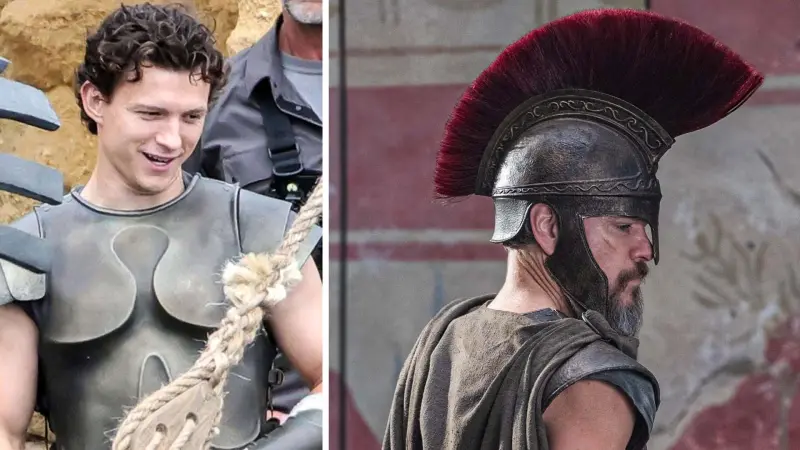More than 120 oil lamps dating to the Late Roman and Early Byzantine periods have been discovered by archaeologists working in the Te'omim Cave in the Jerusalem Hills, tucked away in small, hard-to-reach crevices. It's improbable that they were used for illumination due to their location and the fact that they are so close to multiple human skulls. What were they used for, anyway, if not for lighting?
Entrance to Te’omim Cave. (Credit: Yair Aronshtam / Wikipedia)
The lamps may have been used in necromantic rites, according to Boaz Zissu of Bar-Ilan University and Eitan Klein of the Israel Antiquities Authority. For confirmation in a recent study publication, the pair looked to ancient sources.
Investigating Te'omim Cave
Long thought to be a site of enchantment and mystery, the Te'omim Cave. It was referred to in the 1900s as the Mghâret Umm et Tûeimîn, or the "cave of the mother of twins." The water dripping from its ceiling, which had once been collected in rock pools, was thought to have medicinal properties by the locals. Klein and Zissu asserted in one of their earlier studies that it was a temple dedicated to an underworld deity.
The Te'omim Cave was first mentioned in an 1873 survey of Western Palestine, despite the fact that locals have been aware of it for years. In addition to finding new areas of the cave, later explorations also brought back a number of artifacts. The French consul in Jerusalem discovered a collection of stone and ceramic objects dating from the Stone Age to the Byzantine era during the 1920s.
Doctor-explorer Gideon Mann discovered corridors that led to secret chambers with glass jars between 1970 and 1974. The most recent excavations, directed by the Hebrew University of Jerusalem, went even further beneath the surface, unearthing not only the lights and skeletons mentioned above but also daggers and an axe head.
Klein and Zissu initially entertained the idea that these items might have been dragged off by rodents into more difficult areas of the cave. A skull perched atop four oil lamps in one crevice, however, revealed a different tale. The collection implied that people, not rodents, were to blame and that they might have employed these items for a particular use.
In the Greco-Roman era, necromancy
It's probable that the goal was necromancy, which was both common and frowned upon in ancient times. The emperors Nero, Hadrian, Commodus, Caracalla, and Elagabalus all employed necromancy to foretell their futures despite the practice being officially forbidden in Rome. The historian Eusebius claims that an Egyptian sorcerer persuaded Valerian, the emperor, to sacrifice children in order to ensure his own prosperity.
In the Levant, necromancy was also practiced. This is demonstrated by the Bible, which describes Saul calling upon the prophet Samuel on Ein Dor, and by cuneiform tablets from Mesopotamia, which describe rituals for calling forth ghosts with skulls and describe the sun god Ama requesting that they "bring up a ghost from the darkness" and have them give life to a "dead man's limbs."
Necromancy did not protect Valerian; he became the first Roman emperor to be taken captive during war. (Credit: Sahand Ace / Wikipedia)
Ancient sources other than cuneiform tablets also connect skulls to necromancy. They are mentioned in Egyptian papyri from the fourth and fifth century AD that were written in Greek. These "are remnants of books of sorcery, the majority of which were destroyed by the establishment," according to Klein and Zissu's analysis. One spell describes how to shut off skulls' mouths to prevent them from speaking or acting. They proceed:
A spell is written in black ink on a flax leaf and then placed on a disinterred skull in order to demonstrate how to awaken the spirit of the dead using this method. Using the skull of Typhon (likely a donkey), on which a spell is written in the blood of a black hound, the aim of [yet] another spell is to receive assistance and protection from ghosts.
The Jerusalem Talmud and the Babylonian Talmud, which were both written between 350 and 500 AD, around the time the oil lamps were deposited inside the crevices of the Te'omim, both mention that the necromancer, known as a ba'al ov, raises the dead by consulting with skulls and prefers to carry out the ritual in a cave.
The study of magic's history
Even lamps have a unique bond with the deceased. The Persian magus and sorcerer Osthanes gave them to the Greeks (during the military campaign of his master, Xerxes) in order to bring them into contact with the afterlife, according to the Roman author Pliny the Elder, who listed them in his Natural History. More than 4,000 oil lamps have been found in the cracks of underground temples close to Corinth and Patras.
Bowls and axes are two further items that Pliny describes that had been retrieved from the Te'omim Cave. Weapons may have been used in necromantic rituals so that practitioners could defend themselves from demonic forces. These hints lead Klein and Zissu to the conclusion that the Te'omim Cave "has all the physical and cultic elements necessary to serve as a possible portal to the underworld." Furthermore, they speculate that the surrounding cities of Aelia Capitolina and Eleutheropolis, whose residents were most likely not Jewish, may have used the cave as a local oracle of the dead.
The authors of this work, Klein and Zissu, consider it as a contribution to the "archaeology of magic," a new and frequently complex topic.








